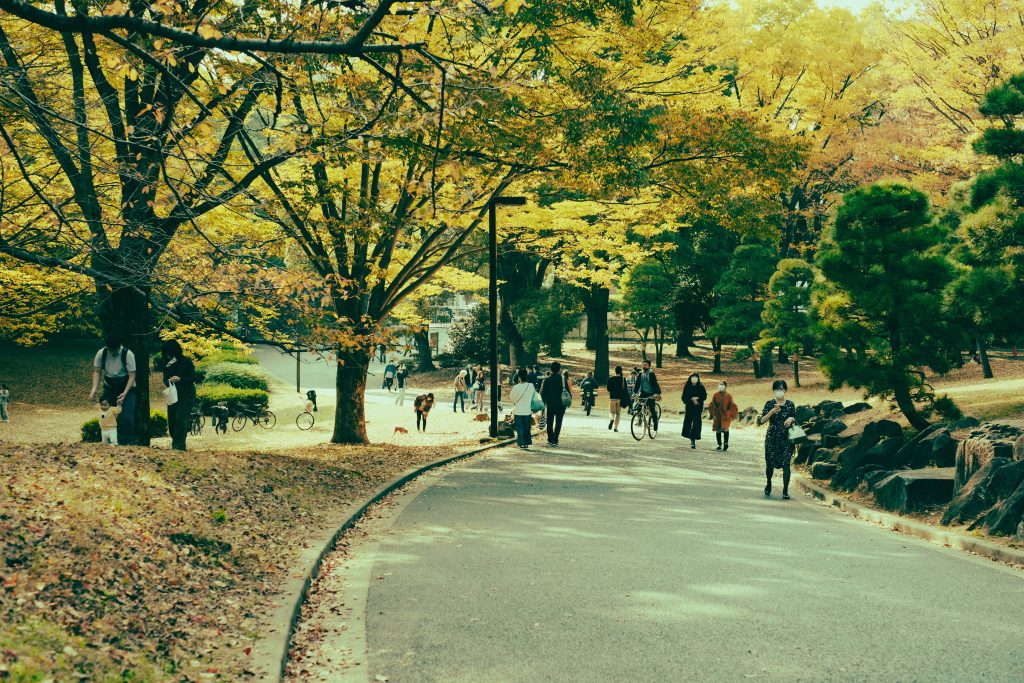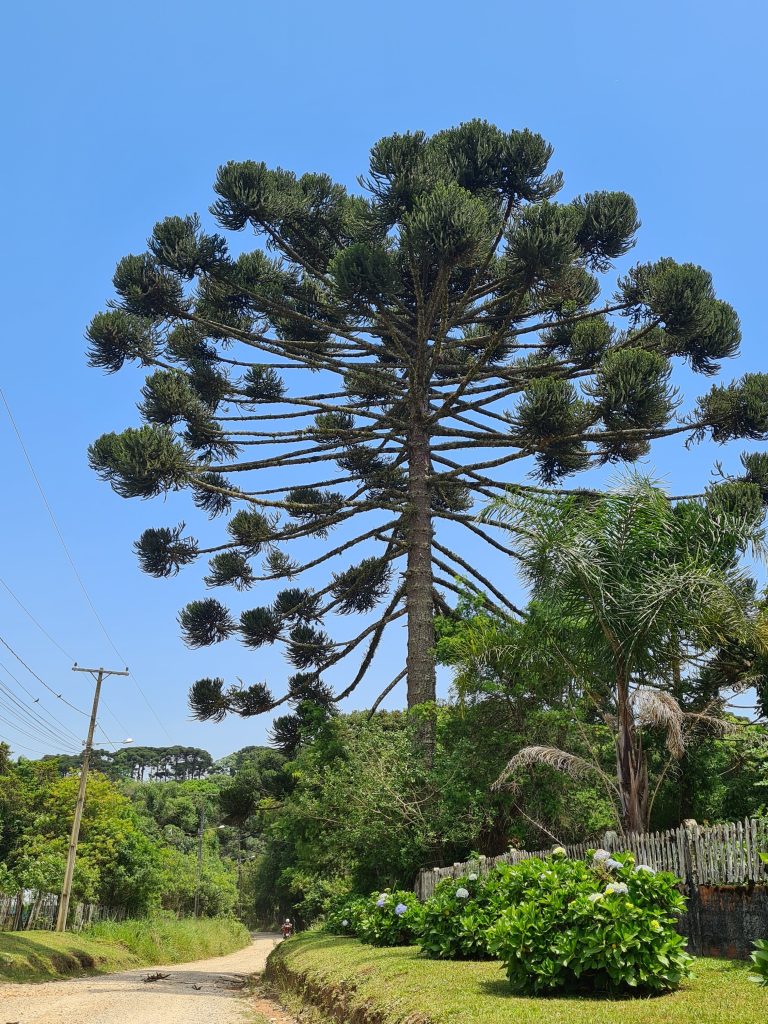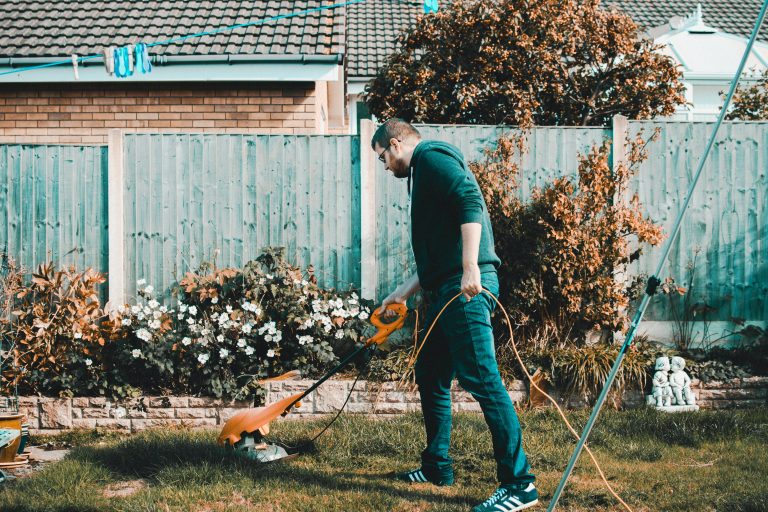Imagine yourself stepping out into your backyard on a sunny morning, ready to tend to your garden and watch it flourish. But wait, have you been unknowingly making some common gardening mistakes that might be hindering your plants’ growth? In this article, we will shed light on some of these errors and provide you with helpful tips to avoid them. Whether you are a seasoned gardener or just starting out, this valuable information will ensure that your green thumb stays firmly intact throughout the seasons. So grab your gardening gloves and let’s get started on creating a vibrant and thriving garden!
Table of Contents
ToggleChoosing the Wrong Plants
When it comes to gardening, one of the biggest mistakes you can make is choosing the wrong plants for your garden. This can lead to a lot of frustration and disappointment down the road. There are a few key factors to consider when selecting plants for your garden.
Not considering the climate
The first thing you need to take into account is the climate in which you live. Different plants have different temperature and rainfall requirements, so it’s important to choose plants that are well-suited to your climate. If you’re not sure what plants will thrive in your area, do some research or consult with a local gardening expert.
Not researching plant requirements
Another common mistake is not researching the specific requirements of the plants you’re considering. Some plants need full sun, while others prefer shade. Some plants require well-draining soil, while others thrive in wetter conditions. By understanding the specific needs of each plant, you can ensure that they will thrive in your garden.
Ignoring the size and growth habits
Finally, it’s important to consider the size and growth habits of the plants you choose. All plants will grow and spread over time, so it’s crucial to give them enough space to do so. Planting too closely together can result in overcrowding and restricted growth. Additionally, certain plants have invasive tendencies and can take over your garden if not properly contained. Take the time to research and plan for the eventual size and growth habits of the plants you choose.
Ignoring Soil Preparation
Proper soil preparation is a fundamental step in creating a successful garden. However, it’s a step that is often overlooked or rushed through. Neglecting soil preparation can lead to poor plant growth and disappointing results. Here are some common mistakes to avoid.
Not testing the soil
Before planting anything, it’s important to test your soil. Soil testing can reveal important information about the pH level, nutrient content, and texture of your soil. This information will guide you in determining if any amendments are necessary. Testing your soil can be done through a local cooperative extension office or with a home testing kit.
Neglecting to amend the soil
Once you have tested your soil, it’s time to amend it if necessary. Different plants have different soil requirements, so it’s important to tailor your soil amendments accordingly. Adding organic matter, such as compost or well-rotted manure, can improve soil structure, fertility, and drainage. It’s important to thoroughly mix the amendments into the existing soil to ensure an even distribution.
Failing to consider drainage
Lastly, it’s essential to consider the drainage of your soil. Poor drainage can lead to waterlogged roots and ultimately, the death of your plants. If your soil has drainage issues, you may need to take steps to improve it. This can include adding organic matter to improve soil structure or creating raised beds or mounds to promote better drainage. By addressing drainage issues, you can create an optimal environment for your plants to thrive.
Overwatering and Underwatering
Watering is a critical aspect of gardening, but it’s easy to make mistakes when it comes to watering frequency and amount. Both overwatering and underwatering can have detrimental effects on your plants. It’s important to find the right balance and adjust your watering practices accordingly.
Watering too frequently
One common mistake is watering plants too frequently. While it may seem like you’re providing your plants with the necessary hydration, overwatering can actually suffocate the roots and lead to root rot. It’s important to allow the top inch of soil to dry out before watering again. By allowing the soil to slightly dry between watering, you promote healthy root growth and prevent waterlogged conditions.
Watering too little
On the other hand, underwatering can also harm your plants. Plants need water to thrive, and inadequate watering can result in stunted growth, wilted leaves, and nutrient deficiencies. It’s important to monitor the moisture levels of your soil regularly and water deeply when necessary. This ensures that the water reaches the root zone and encourages healthy plant growth.
Not adjusting watering according to weather
In addition to finding the right watering frequency, it’s important to consider the weather conditions. During periods of heavy rain, you may need to adjust your watering schedule to avoid waterlogging. Similarly, during hot and dry periods, you may need to increase the frequency and duration of watering. By paying attention to the weather and adjusting your watering practices accordingly, you can provide your plants with the ideal conditions for growth.
Improper Pruning
Pruning is an essential maintenance practice in gardening, but if done improperly, it can do more harm than good. Improper pruning can weaken plants, promote disease, and result in unsightly growth. Here are some common mistakes to avoid when pruning your plants.
Pruning at the wrong time
One common mistake is pruning at the wrong time of year. Different plants have different pruning requirements, and pruning at the wrong time can interfere with flowering or fruiting. It’s important to understand the specific pruning needs of each plant in your garden and prune accordingly. Generally, pruning should be done during the dormant season or immediately after flowering.
Cutting too much
Another mistake gardeners often make is cutting back too much of the plant. While pruning is meant to encourage healthy growth and shape the plant, excessive pruning can stress the plant and weaken its overall structure. It’s important to follow proper pruning techniques and avoid removing more than one-third of the plant’s total growth. By practicing moderate pruning, you can maintain the plant’s health and appearance.
Neglecting to sterilize tools
Lastly, neglecting to sterilize your pruning tools can lead to the spread of diseases and pests. When pruning, it’s important to clean and sanitize your tools between cuts, especially if you’re dealing with diseased plants. This helps prevent the transfer of pathogens from one plant to another. Simply wiping down your tools with a disinfectant or dipping them in rubbing alcohol can effectively sterilize them and protect the health of your garden.
Lack of Pest and Disease Management
Pests and diseases can wreak havoc on your garden if not properly managed. Ignoring pest and disease issues can result in poor plant health, decreased yields, and even the loss of plants. By being proactive and implementing proper management techniques, you can minimize the impact of pests and diseases on your garden.
Not identifying pests and diseases early
One of the biggest mistakes gardeners make is failing to identify pests and diseases early on. By the time visible damage is noticed, the infestation or disease may have already spread significantly. It’s important to regularly inspect your plants for signs of pest activity or disease symptoms. Look for chewed leaves, unusual spots, wilting, or discoloration. By catching issues early, you can take swift action and prevent further damage.
Ignoring preventive measures
Prevention is key when it comes to managing pests and diseases in your garden. Many issues can be avoided by implementing simple preventive measures. This can include practicing crop rotation, using physical barriers or traps, and maintaining good garden hygiene. By keeping your garden clean, removing debris, and practicing good sanitation, you can reduce the chances of pests and diseases taking hold.
Using chemical pesticides excessively
While pesticides can be effective in controlling pests and diseases, excessive use can do more harm than good. Chemical pesticides can harm beneficial insects, pollinators, and even impact human health. It’s important to use pesticides as a last resort and opt for more natural and organic methods whenever possible. This can include using insecticidal soaps, neem oil, or biological controls like beneficial insects. By minimizing pesticide use, you can maintain a healthy and balanced garden ecosystem.
Neglecting Weeds
Weeds are the bane of every gardener’s existence, and neglecting them can quickly lead to their takeover. Ignoring weeds can result in stunted plant growth, nutrient competition, and an unsightly garden. Here are some common mistakes to avoid when it comes to weed management.
Not addressing weeds promptly
One of the biggest mistakes gardeners make is not addressing weeds promptly. Weeds can quickly spread and establish deep roots, making them difficult to remove. It’s important to pull weeds as soon as they appear, ideally before they have a chance to set seed. Regular and diligent weeding can prevent weed populations from getting out of control and keep your garden looking tidy.
Failing to use mulch
Mulch is a gardener’s best friend when it comes to weed control. Failing to use mulch can result in increased weed growth and the need for more frequent weeding. Mulch acts as a barrier, preventing weed seeds from germinating and blocking sunlight from reaching existing weeds. Applying a layer of organic mulch, such as wood chips or straw, can make a significant difference in weed suppression and reduce the time and effort spent on weeding.
Improper weed removal techniques
When it comes to removing weeds, technique is important. Simply pulling the top portion of the weed without removing the roots can result in regrowth. It’s crucial to remove the entire weed, including the roots, to prevent the weed from growing back. This can be accomplished by using a small hand trowel or weeding tool to dig down and loosen the soil around the weed before pulling it out. By employing proper weed removal techniques, you can ensure effective weed control in your garden.
Improper Planting
Proper planting technique is essential for the long-term success of your plants. Improper planting can lead to root damage, poor establishment, and hampered growth. By following some simple guidelines, you can ensure that your plants get off to the best possible start.
Planting too close together
One of the most common mistakes gardeners make is planting their plants too close together. While it may be tempting to cram as many plants as possible into a small space, overcrowding can lead to stunted growth and increased competition for resources. It’s important to give your plants enough room to grow and spread. Pay attention to the spacing requirements provided on plant labels or in gardening resources, and provide adequate space for each plant to thrive.
Planting too deep
Another common mistake is planting your plants too deep. When plants are buried too deeply, it can suffocate the roots and hinder their ability to access oxygen and nutrients. It’s important to dig a hole that is just deep enough to accommodate the root ball of the plant. The top of the root ball should sit slightly above the soil level to prevent excess moisture accumulation. By planting at the proper depth, you can promote healthy root development and ensure the long-term success of your plants.
Not loosening the roots before planting
Lastly, neglecting to loosen the roots before planting can result in root binding and restricted growth. When plants are grown in containers, their roots often become densely packed and can start to encircle the root ball. Before planting, gently tease out the roots with your fingers to loosen them and promote outward growth. This will help the roots establish quickly in the surrounding soil and prevent the plant from becoming root-bound.
Insufficient Sunlight
Sunlight is essential for plant growth and photosynthesis. Insufficient sunlight can result in weak, leggy plants with poor flower or fruit production. It’s important to consider the sunlight requirements of your plants and ensure they are positioned in the right location to receive the necessary amount of sunlight.
Not considering plant sunlight requirements
Different plants have different sunlight requirements. Some plants thrive in full sun, while others prefer partial shade or even full shade. It’s important to research and understand the sunlight needs of the plants you’re growing and find suitable locations for them in your garden. By choosing the right plants for the available sunlight, you can ensure that they receive the energy they need to thrive.
Placing plants in shaded areas
Placing plants in shaded areas when they require full sun can severely limit their growth potential. Even shade-tolerant plants have their limits and need at least some exposure to direct sunlight. If you have a shady garden, consider creating pockets of sunlight by selectively pruning overhanging trees or using reflective surfaces to bounce sunlight onto your plants. By maximizing the available sunlight, you can support healthy plant growth.
Neglecting to monitor sunlight changes
Lastly, it’s important to monitor changes in sunlight throughout the seasons. As trees leaf out or neighboring buildings cast shadows, the amount of sunlight reaching your garden can change. It’s crucial to regularly evaluate the sunlight conditions in your garden and adjust the placement of your plants accordingly. Moving plants to sunnier areas or implementing shading techniques can ensure that they continue to thrive despite changing light conditions.
Ignoring Fertilization
Proper fertilization is essential for replenishing essential nutrients in the soil and supporting healthy plant growth. Ignoring fertilization can lead to nutrient deficiencies, stunted growth, and decreased yields. Here are some common mistakes to avoid when it comes to fertilizing your garden.
Using too much fertilizer
Using excessive amounts of fertilizer can be just as detrimental as not fertilizing at all. Overfertilization can lead to nutrient imbalances, fertilizer burn, or even water pollution if excess nutrients leach into groundwater. It’s important to follow the recommended application rates provided on fertilizer labels and avoid the temptation to apply more than necessary. By using fertilizer judiciously, you can provide your plants with the nutrients they need without causing harm.
Using the wrong type of fertilizer
Not all fertilizers are created equal, and using the wrong type of fertilizer can limit its effectiveness. Different plants have different nutrient requirements, so it’s important to choose a fertilizer with the appropriate nutrient composition. A balanced fertilizer, such as a 10-10-10, can be a good general-purpose option. However, some plants, like acid-loving plants or fruits and vegetables, may benefit from specialized fertilizers. By understanding your plant’s nutritional needs, you can select the right fertilizer for optimal growth.
Not fertilizing at the appropriate times
Timing is crucial when it comes to fertilization. Failing to fertilize at the appropriate times can result in missed opportunities for nutrient uptake and diminished plant health. The timing of fertilization can vary depending on the type of plant and its growth cycle. For most plants, it’s best to fertilize in early spring before new growth begins and again in late summer to promote fall root development. By timing your fertilizer applications correctly, you can provide your plants with the nutrients they need when they need them most.
Lack of Regular Maintenance
Regular maintenance is key to a thriving and beautiful garden. Neglecting maintenance tasks can result in overgrown plants, diminished plant health, and an unkempt appearance. By staying on top of regular maintenance, you can enjoy a garden that is a joy to behold. Here are some important maintenance tasks to prioritize.
Not pruning or deadheading regularly
Pruning and deadheading are important maintenance practices that promote healthy growth and prolong blooming periods. Failing to prune or deadhead regularly can result in leggy plants, reduced flower production, and an overall untidy appearance. It’s important to remove dead or dying foliage, flowers, and stems to prevent the spread of diseases and redirect the plant’s energy into new growth. By incorporating regular pruning and deadheading into your gardening routine, you can keep your plants looking their best.
Neglecting to check for signs of distress
Regularly checking your plants for signs of distress is essential for early detection and intervention. Neglecting to observe your plants can allow issues to escalate and damage to become irreversible. Take the time to inspect your plants for pests, diseases, nutrient deficiencies, or any other signs of distress. Look for yellowing leaves, wilting, curling, or unusual growth patterns. By catching problems early, you can take immediate action and prevent further damage.
Forgetting to clean tools and equipment
Proper maintenance extends to your gardening tools and equipment as well. Forgetting to clean and maintain your tools can result in decreased performance, the spread of diseases, and a shortened lifespan. After each use, take the time to clean your tools and remove any debris or residue. Additionally, it’s important to periodically sharpen blades, oil moving parts, and store tools in a dry, protected area. By caring for your tools and equipment, you can ensure they remain in good working order and continue to serve you well.
In conclusion, avoiding common gardening mistakes is crucial for creating a successful and thriving garden. By considering climate, researching plant requirements, preparing the soil, watering appropriately, pruning correctly, managing pests and diseases, addressing weeds promptly, planting properly, providing adequate sunlight, fertilizing correctly, and regular maintenance, you can set yourself up for gardening success. Remember, gardening is a journey of learning and experimentation, so don’t be discouraged by mistakes. Learn from them, adapt, and enjoy the process of creating a beautiful and bountiful garden.









